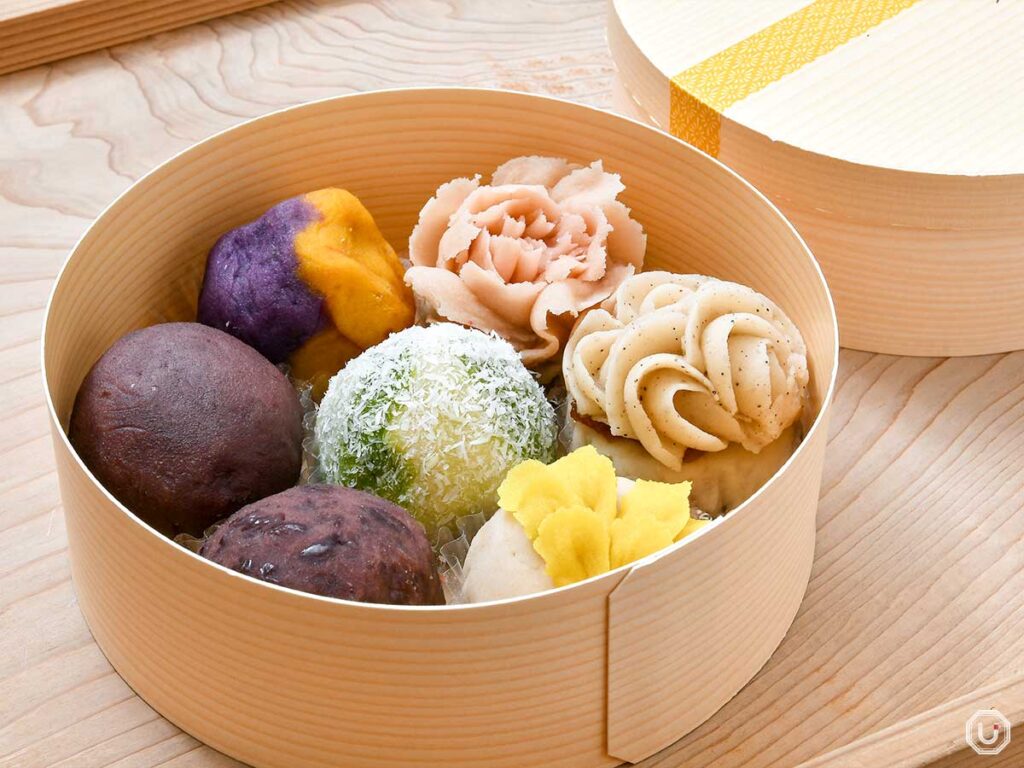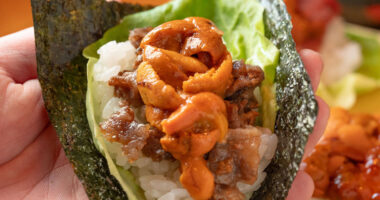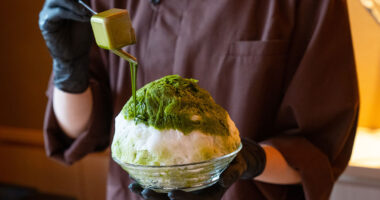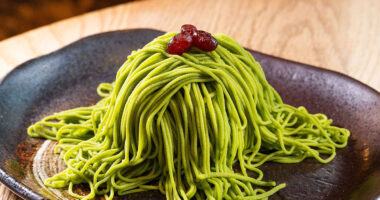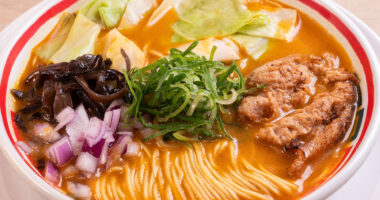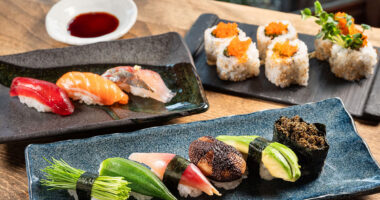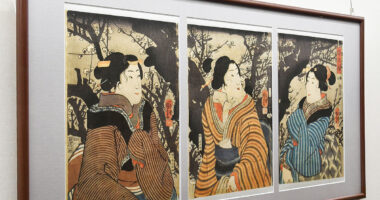Ohagi, a traditional Japanese sweet said to have been enjoyed since the Kamakura period (1185 to 1333), is typically made from sweet rice and red bean paste.Depending on the season or region, it may also be known as botamochi.
These confections, deeply rooted in Japan’s spiritual customs, were traditionally enjoyed during Ohigan, a Buddhist holiday celebrated during the spring and autumn equinoxes to honor ancestors.
With its humble appearance and time-honored flavor, ohagi has remained largely unchanged over the years. However, “Takeno to Ohagi” is redefining this classic treat with a fresh, artistic twist.
By turning ohagi into stunning works of edible art, this up-and-coming wagashi (traditional Japanese sweets) shop has quickly become a favorite among sweet lovers.
A new-style ohagi shop hidden in Omotesando
Just a three-minute walk from Omotesando Hills, past a variety of stylish cafes and boutiques, you’ll find the Omotesando branch of Takeno to Ohagi.
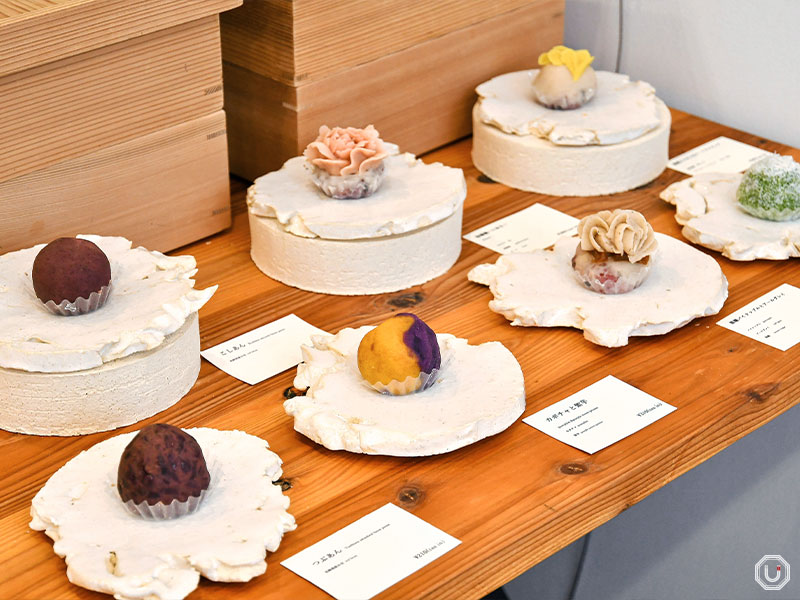
Items on sale at Takeno to Ohagi’s Omotesando location *as of June 2025
There are seven types of ohagi in total: the two standard “Tsubuan smashed bean paste,” and “Koshian smooth bean paste,” and five daily specials. They also offer a limited-edition Omotesando-exclusive set in a custom-made paulownia wood box.
You can purchase the ohagi individually, or create your own custom box by mixing and matching your favorites.
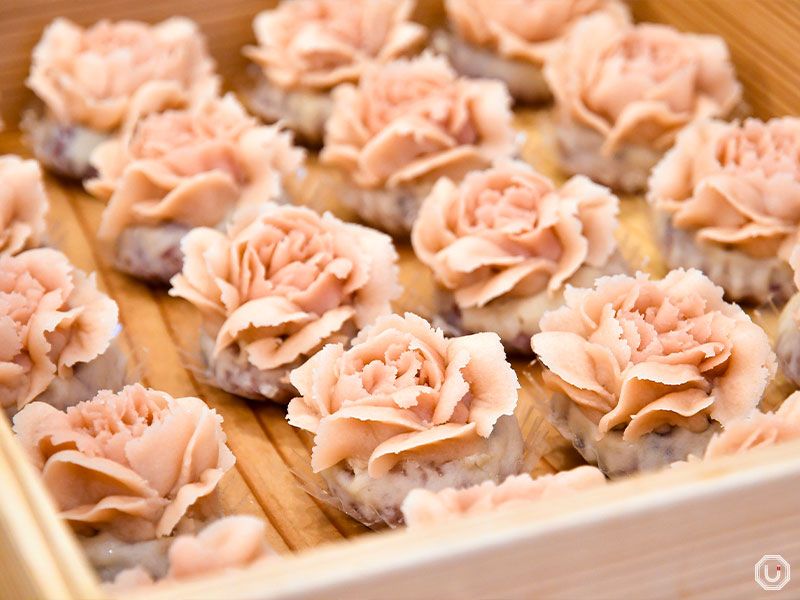
Ohagi at Takeno to Ohagi
Peeking inside the paulownia box reveals a row of vibrant, flower-like ohagi!
Each ohagi is about 4 cm (1.6 in.) in size.
With their delicate, artistic shapes, it’s hard to believe these ohagi are made from sweet bean paste—this refined presentation is what sets Takeno to Ohagi apart.
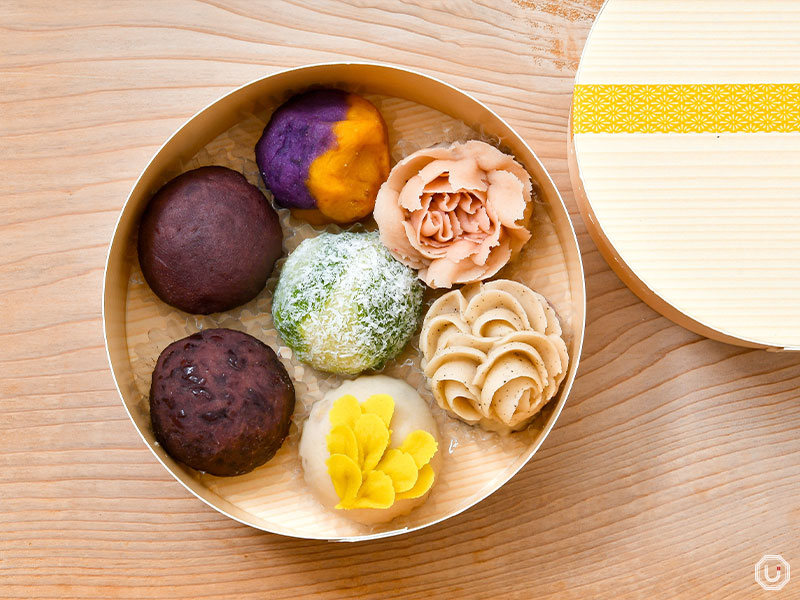
A box of seven assorted ohagi
The two standard types lined up at the shop and five daily specials were all packed together into one vibrant box. The store’s ohagi are a beloved choice for gifts and sashiire, a cherished Japanese custom of sharing thoughtful and often freshly made treats with friends or colleagues when visiting—and it’s easy to see why.
Part of the fun is not just the taste, but also thinking about how to combine them by color.
Enjoy comparing the two classic tsubuan and koshian ohagi
Typical ohagi are made by lightly mashing cooked glutinous rice, then wrapping it in sweet anko (red bean paste) or covering it with kinako (roasted soybean flour).
It’s a classic type of wagashi that can be easily found at local sweet shops and supermarkets.
At Takeno to Ohagi, their standard flavors are the classic tsubuan and koshian bean paste, as mentioned above.
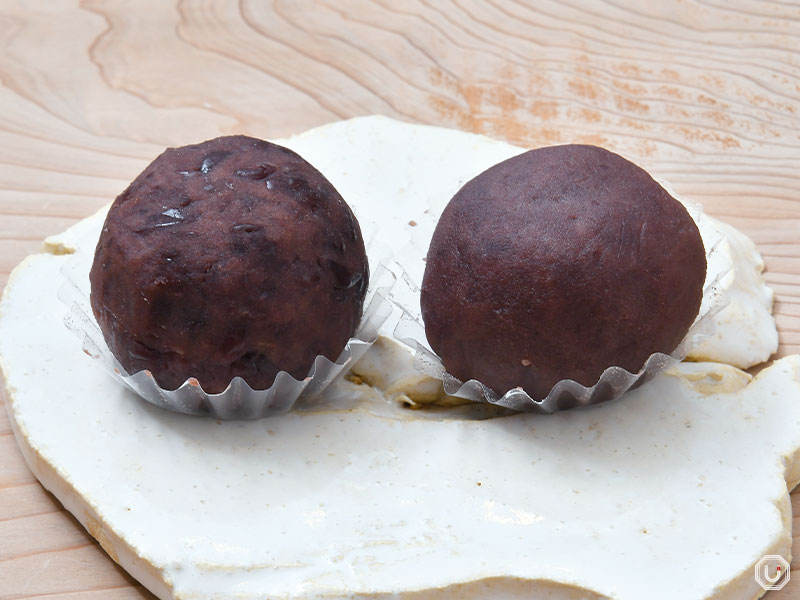
(left) “つぶあん,” Tsubuan smashed bean paste; (right) “こしあん,” Koshian smooth bean paste 210 JPY each (tax included)
The shop’s ohagi attract attention with their vibrant appearance, but the reliable deliciousness of each piece is also one of the reasons for their popularity.
If you want to enjoy the pure taste of red bean paste, these two classics are highly recommended.
The red bean paste is made using azuki beans from Hokkaidō, with two styles: tsubuan, made with crushed beans and retaining their skins, and koshian, where the skins are removed by soaking and straining the beans.
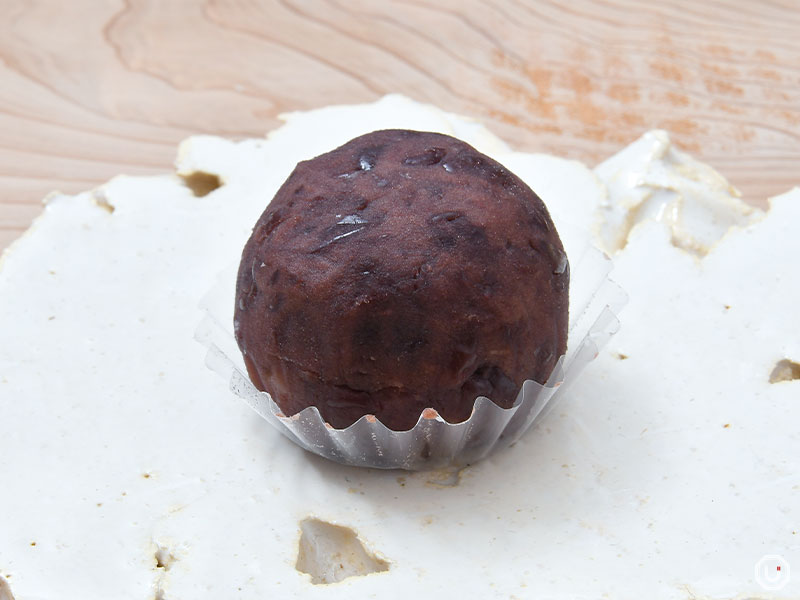
“つぶあん,” Tsubuan smashed bean paste
Tsubuan has a coarser texture and less sweetness, allowing you to really savor the natural flavor and slight bite of the beans. Koshian, on the other hand, is smooth and refined, with a delicate sweetness.
Though they may look similar, tasting them side by side highlights the distinct differences in texture and flavor.
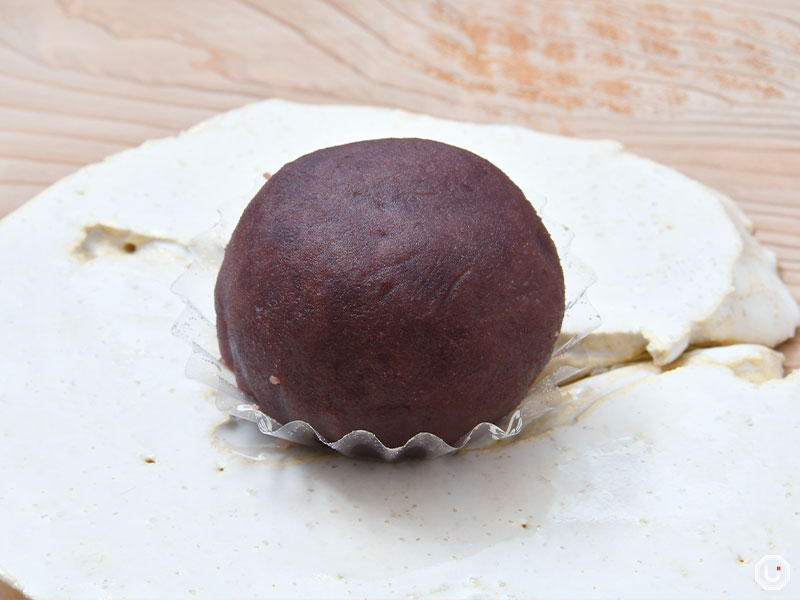
“こしあん,” Koshian smooth bean paste
Inside the bean paste, you’ll find mashed glutinous rice. Different shops have their own styles for how much the rice is mashed. At Take no to Ohagi, they leave the rice mostly whole.
Additionally, the sweetness of the red bean paste is kept mild, making it enjoyable even as if it were a rice dish—this is its greatest characteristic.
The ever-changing beauty of seasonal ohagi
The five daily specials change regularly, reflecting the seasons. Shaped like flowers and made with seasonal ingredients, each ohagi is a small work of edible art—choosing which to eat is part of the fun.
Unlike the standard types, these special ohagi are made by mixing in akamai (red rice), a type of rice that turns reddish when cooked.
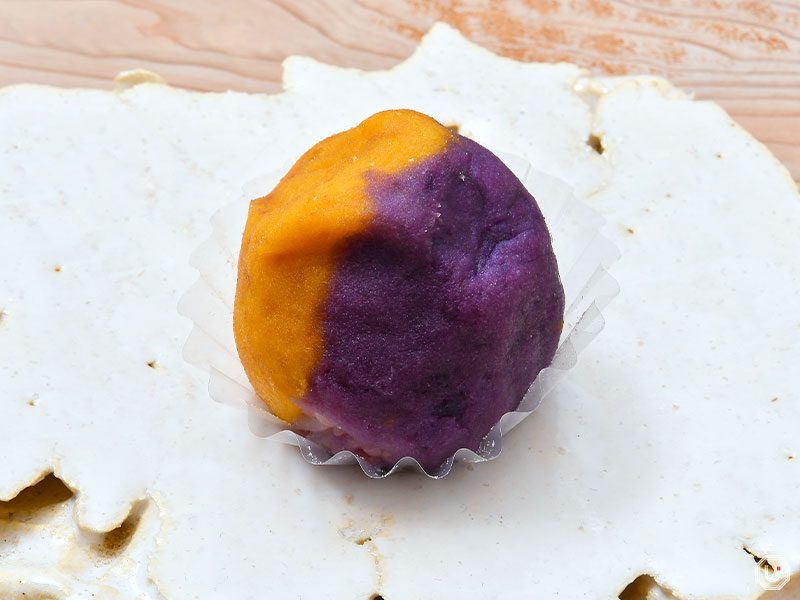
“カボチャと紫芋,” Pumpkin and Purple Sweet Potato 310 JPY (tax included) *as of June 2025
The two-toned “pumpkin and purple sweet potato” ohagi features a paste made from pumpkin and purple sweet potato, wrapped around red rice. Its bold color contrast makes it especially eye-catching and playful.
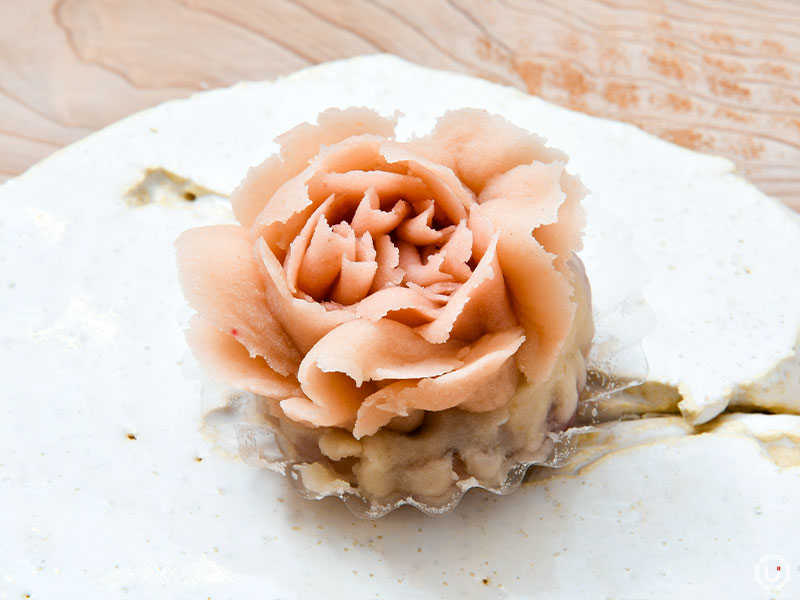
“和薔薇〜いおり〜,” Wabara 310 JPY (tax included) *as of June 2025
Shaped like a beautiful rose, the “Wabara” ohagi uses beetroot to tint the delicate petals. Between the rice and the bean paste, you’ll find layers of golden sesame and fig paste, adding a satisfying, poppy texture.
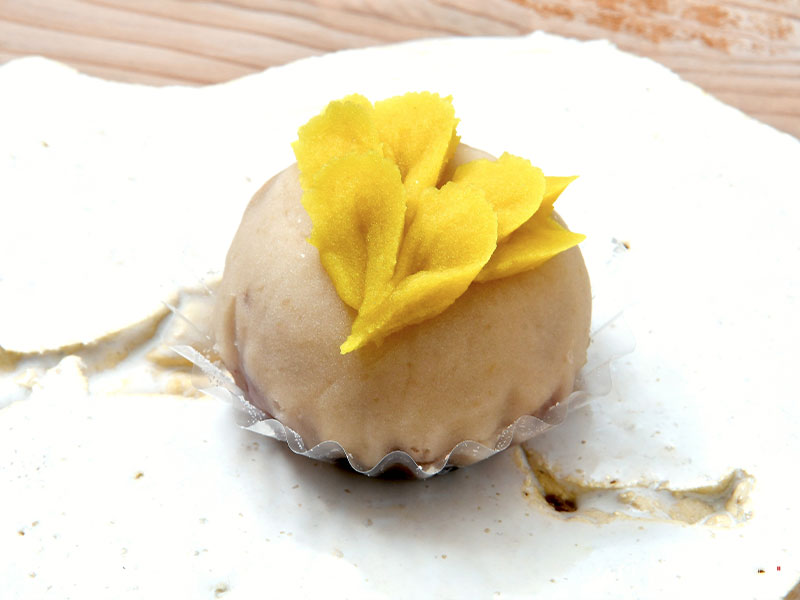
“薔薇とレモンのバート ドフリュイ, rose & lemon pâte de fruit 380 JPY (tax included) *as of June 2025
Some creations showcase unexpected, modern ingredient combinations that you rarely see in traditional wagashi.
This is the “rose & lemon pâte de fruit,” made with edible roses.
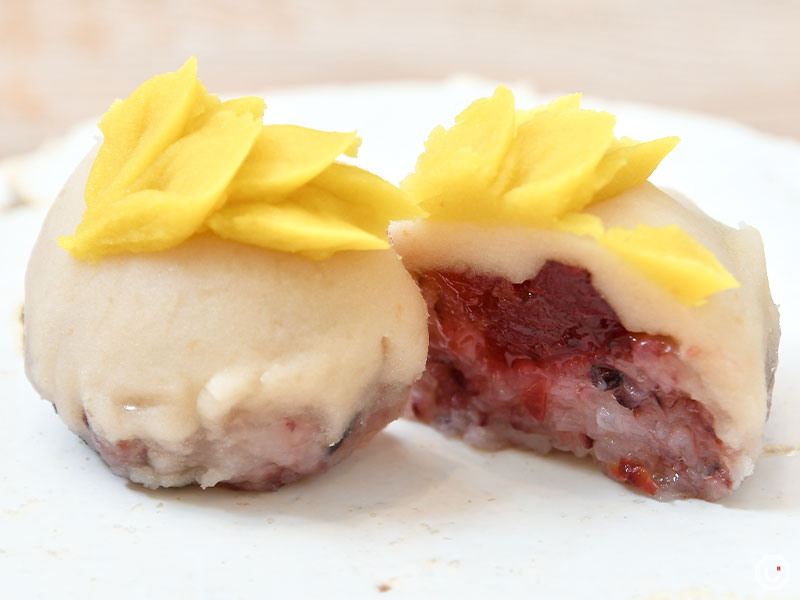
“薔薇とレモンのバート ドフリュイ,” rose & lemon pâte de fruit
It combines lemon-infused red bean paste with edible rose confiture, filling your mouth with a refreshing sweetness and the aroma of roses.
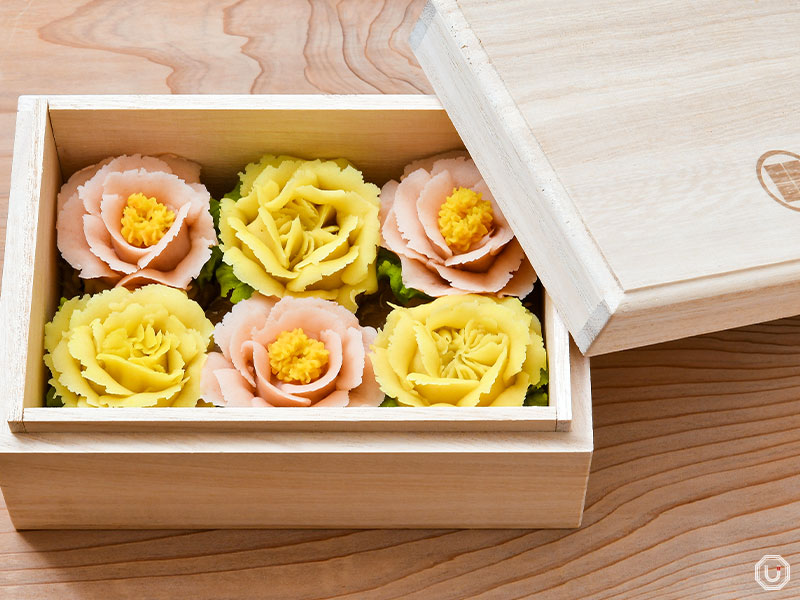
“表参道店限定おはぎ,” Omotesando-exclusive Box Set 3,780 JPY (tax included) *as of June 2025
At Takeno to Ohagi’s Omotesando location, they sell a limited number of “Omotesando-exclusive Box Sets” each day—six pieces beautifully arranged in a paulownia wood box.
During our visit, the selection featured flower-themed ohagi. In addition to floral designs, there are also creations inspired by Japanese paintings, and depending on the season, collaborative items with other brands may appear as well.
This ohagi box makes a perfect gift. Since reservations aren’t available, those who want to be sure to get one should aim to visit at opening time.
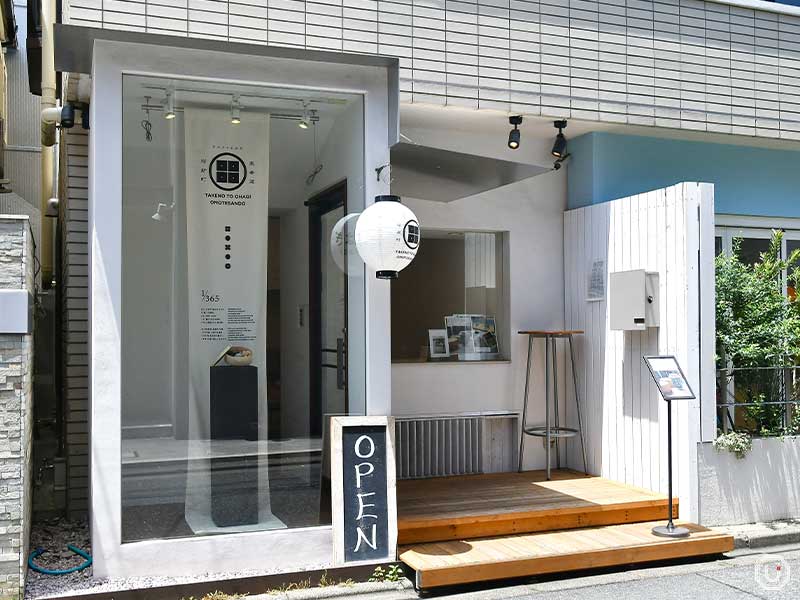
Exterior of Takeno to Ohagi’s Omotesando location
There’s a bench inside the shop and a standing table outside. They also sell takeaway green tea, so you can enjoy the ohagi you’ve just purchased right then and there.
Inside the shop, you’ll also find a traditional noren curtain with the story behind the shop’s name. It’s a lovely spot to take your time, savor the ohagi, and reflect on the history and thoughtfulness behind them.
Information
| Store name | タケノとおはぎ Takeno to ohagi |
|---|---|
| Address | Tiara Building 1F, 4-14-20 Jingumae, Shibuya-ku, Tokyo
|
| Access | Omote-sando Station 5-minute walk from Exit A2
Meiji-jingumae ‘Harajuku’ Station 8-minute walk from Exit 5
Harajuku Station 10-minute walk from Harajuku Station East Exit
|
| Phone number | 03−6721−0887 |
| Reservations | Not accepted |
| Payment |
|
| Hours | 11:00-18:00 |
| Closed | Monday & Tuesday |
| Seating | 5 seats 4 bench seats, 1 standing table seat |
| Smoking | All seats are non-smoking |
| Official website | https://www.instagram.com/takeno_to_ohagi?igsh=bHZ3cXNtYXp6b3Ns |
| Other information |
|
※Menu contents, prices, store information, etc. are current as of July 2025.
